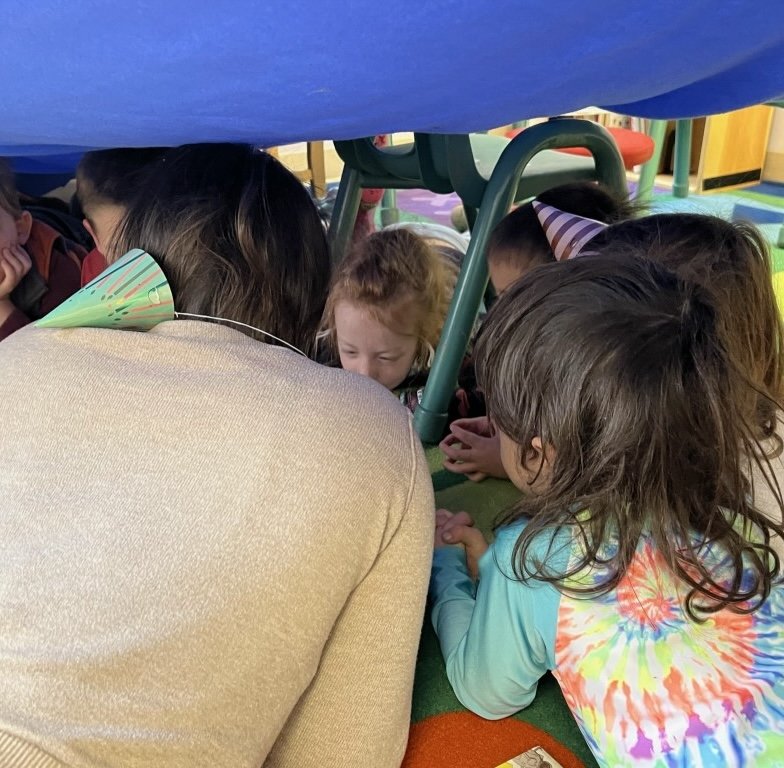Unveiling The Magic of Unconventional Reading Spaces
How can you intentionally connect with your child and promote early reading skills?
Consider creating a special, unconventional reading experience with cozy, magical ambiance.
When was the last time you built a fort?
As parents, one of the most wonderful gifts we can give our children is the love of reading. But who says it has to be done in the traditional way? Let's explore the magic of unconventional reading spaces, where imagination and education blend seamlessly.
Why Unconventional Reading Spaces?
Children aged 2-10 are in a phase where their imagination and creativity are boundless. Traditional reading settings, like a quiet bedroom or a library corner, are great, but unconventional reading spaces add an element of curiosity, mystery and adventure. These spaces not only make reading more appealing but also help in developing a deeper bond between you and your child through shared experiences.
Examples of Unconventional Reading Spaces
The Enchanted Blanket Fort: Transform your living room into a mystical cave or a castle with a simple blanket fort. Use chairs, cushions, and blankets to build your fort. Add some fairy lights for a magical touch. This cozy setting becomes the perfect backdrop for fairy tales and adventures.
Outdoor Reading Nooks: Utilize your backyard or balcony to create an outdoor reading paradise. A hammock between two trees, a tent filled with comfy pillows, or even a picnic blanket under the sky can turn reading into an exploration of nature.
Bookish Treehouse Retreats: If you have a treehouse, turn it into a secret reading clubhouse. Stock it with nature-themed books or stories about adventures, enhancing the connection with the outdoors.
Reading Kitchen: Combine story time with snack time in the kitchen. While you prepare simple snacks, your child can read aloud recipes or stories related to food. It’s a fun way to link reading with everyday activities.
Under-the-Stairs Hideaway: Often overlooked, the space under the stairs can be converted into a cozy reading spot. Fill it with cushions, soft lighting, and shelves of books to create a hidden gem for reading.
But wait there’s more….
Creating the spaces together creates connection and offers an easy avenue to enrich early literacy.
Involving your child in creating these reading spaces is crucial. It gives them a sense of ownership and excitement. Discuss ideas, choose themes together, and let them help with the setup. This process not only fosters creativity but also enhances their problem-solving and decision-making skills.
Educational Avenues Supported
Language Development: These spaces naturally encourage reading, which in turn improves vocabulary, comprehension, and communication skills.
Creativity and Imagination: Unconventional settings stimulate imaginative play, which is vital for cognitive development.
Bonding and Emotional Growth: Sharing these spaces and stories strengthens your bond and helps in developing empathy and emotional intelligence.
Sensory Stimulation: Different settings provide varied sensory experiences, essential for overall development.
Tips for Parents
Keep it Simple: You don’t need elaborate setups. Sometimes a few pillows and a new location are all it takes.
Rotate Spaces: Change locations or themes occasionally to maintain interest.
Follow Their Lead: Let your child’s interests guide the choice of books and themes for these reading adventures.
Incorporate Learning: Use these spaces to subtly introduce educational concepts related to the themes.
Unconventional reading spaces are more than just reading areas; they are gateways to a world of imagination and learning. As a parent, by creating these magical spaces, you're not just encouraging a reading habit; you're making memories that your child will cherish forever.
Remember, every book read in a blanket fort or under the stars is an adventure shared and a lesson learned.
Good luck on your reading adventures!
Jerica & Jules



